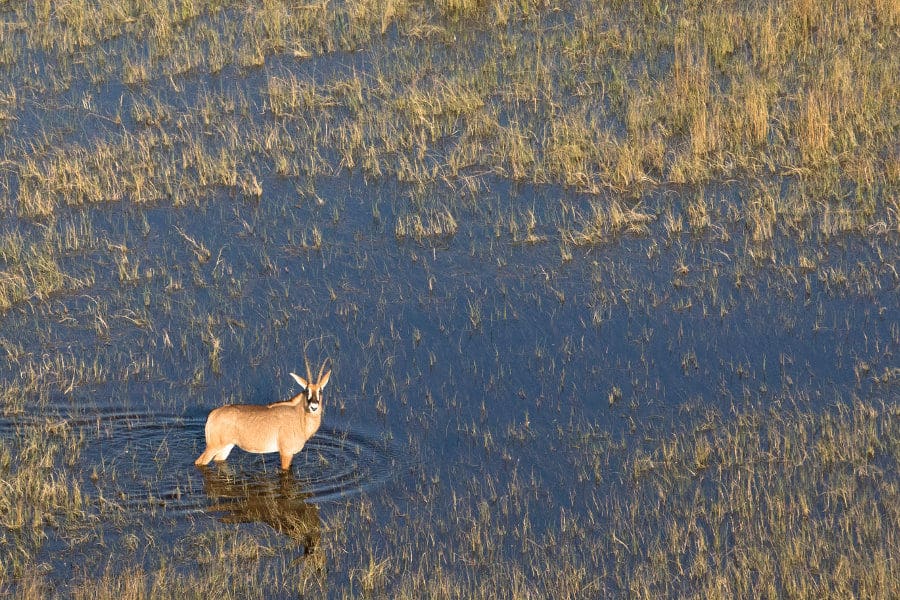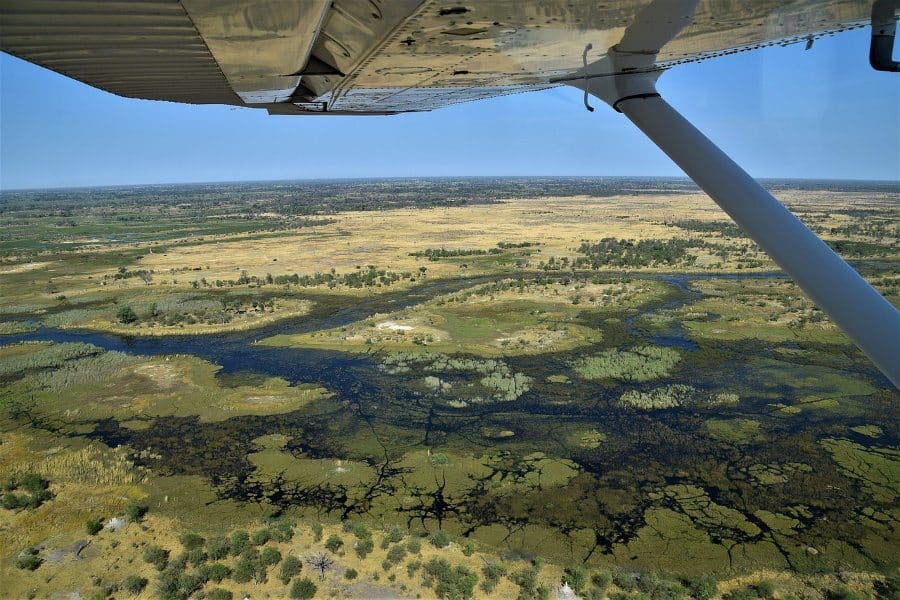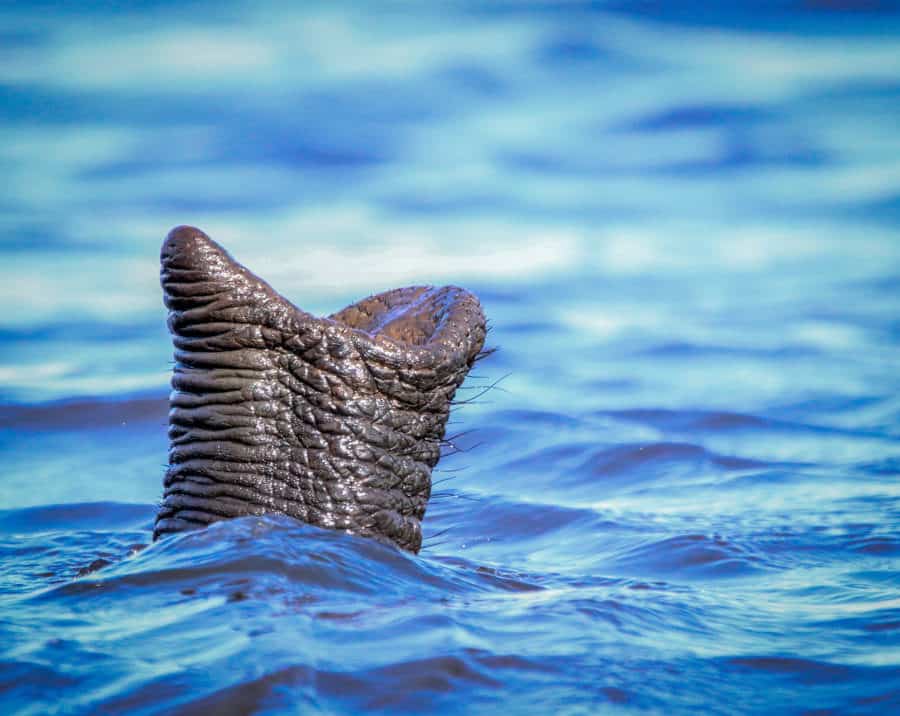Moremi Game Reserve is the legendary wildlife heart of the Okavango Delta.
It’s one of Africa’s ultimate safari destinations. A myriad of resident predators stalk their prey. Hippos and elephants maraud around. Water attracts migratory species and the contrasting ecosystems are as diverse as anywhere in Southern Africa.
If you are planning a safari to Southern Africa you need to know about Moremi Game Reserve. You’ve probably heard of the Okavango Delta. Well, Moremi is where all action really happens in the Okavango.
Where is the Okavango Delta and Where is Moremi?

The Okavango Delta spills across the Kalahari Desert in Botswana. It is one of Africa’s most famous natural landscapes and destinations.
This safari guide to the Okavango Delta will give you detailed information about this great oasis, including when to visit, wildlife, and different Okavango regions.
Here’s a very brief summary of an enormous delta.
- The Okavango Panhandle in the northwest is great for birdwatching and river safaris.
- Southwestern Okavango is a maze of lagoons and year-round water, with good wildlife safari throughout the year.
- Southeastern Okavango is the most accessible area where the private concessions safaris are cheapest, although the wildlife can be a little thin.
- Northeastern Okavango blurs delta landscape into Chobe National Park woodland. Here you can enjoy stunning land-based safari all year round.
- Northern Okavango provides the very best of the Okavango in terms of camps, wildlife and activities. However, the reserves are very exclusive and expensive.
- Moremi Game Reserve is in the heart of the Okavango Delta. There is safari for many different budgets and a wonderful animal abundance.
Understand: Why Moremi Game Reserve Offers the Best Okavango Safari
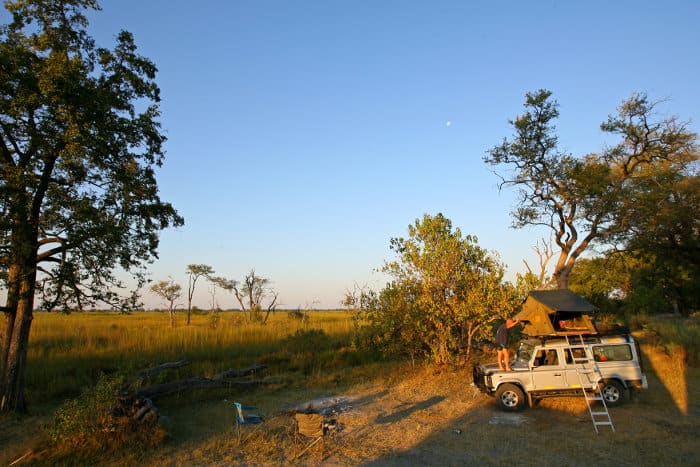
It’s cheaper than the private concessions
Okay, if you can afford upwards of USD 1000 per night then private concessions in Northern Okavango will offer the ultimate safari experience. Most people don’t have such a budget.
Most of the Okavango is gazetted into private game reserves. Some parts of the delta are not even protected. To access a private concession you usually need to spend the night at one of the concession’s camps, and these are generally expensive.
Moremi Game Reserve is the largest protected area. It is a public reserve, not a private concession. This means that anyone can visit Moremi. You just need to pay the game reserve fee.
Moremi is ideal for self drive safaris. You can drive to the Mopane Tongue from Maun and use one of the public campsites.
Budget safari operators also do this. Do note that you still need time to explore. With a one-night safari you will spend most of your time driving, rather than on safari. So even on the strictest budget you really need to stretch the experience to two nights/three days.
The wildlife is astonishing and abundant
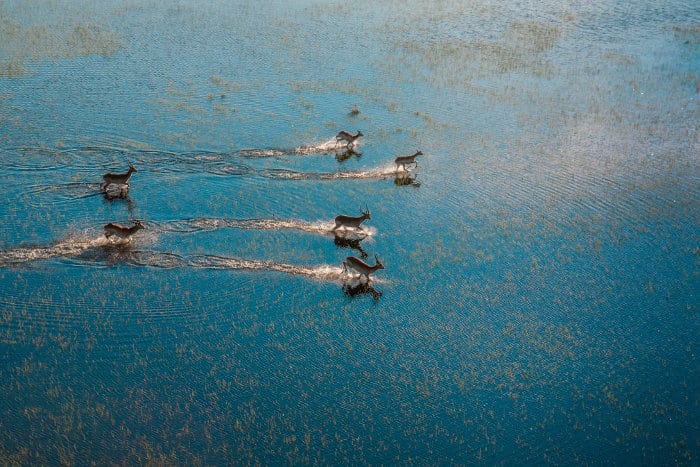
The most expensive real estate is usually in a city’s centre. It’s in the middle of everything and everyone else has to pass through.
The best wildlife habitat is usually around a water source, in the middle of a reserve or protected area. All over Africa, wildlife usually prefers to be deep in the wilderness, as far away as possible from roads and human encroachment.
Border zones often create conflict. Predators have less prey. Prey have fewer places to turn. Habitat is unlikely to be as pristine or unspoiled.
Moremi Game Reserve is in the middle of the Okavango Delta. And it is dominated by water. Animals love it and you can encounter close to 100 different mammal species.
Hippos gather in incredible numbers and patrol most of the waterways. Elephants are everywhere, especially when they migrate into Moremi from May to October. Southern giraffe poke their heads above acacia trees. You will see large herds of Cape buffalo, moving in herds across the channels.
Red lechwe are the most abundant ungulate, thousands of them gathering in swamps and channels to avoid predators. And what predators! Look out for lion prides, leopards, hyenas, and even the endangered African wild dog.
Then there are the Okavango icons, such as wildebeest, zebra, sitatunga, sable antelope, roan antelope and tsessebe.
Such diversity is a highlight and you can see this range of African animals in most of the delta. In Moremi you just see more of it.
You can discover a variety of seasonal habitats

Moremi is a patchwork of ecosystems stitched together by the delta’s channels.
Waterways separate swathes of mopane woodland, seasonal swamps, grasslands, and palm islands. Animals travel through the fringes and settle in this place of lush abundance.
Note that the rivers flood at differing times of year to the rest of the Okavango and the trails are inaccessible from January to June.
Rains fall from January to March in Moremi, meaning you will need a snorkel on any four-wheel drive vehicle to get through. This is the worst time of year for safari because seasonal wildlife has departed to elsewhere in Botswana.
Then the delta starts to flood in May, so the trails and tracks practically disappear beneath mud and sludge. May and June are inaccessible but the safari gets really good from July onwards.
It’s around July that all the seasonal wildlife returns to the Okavango and Moremi Game Reserve. High grass provides cover for predators and food for ungulates. It seems like there is life everywhere. And you can actually explore.
The adventure continues all the way through to November and December. Although animals start departing for fresh pastures, you can still safari in these warm and humid months.
Different safari activities mean every day is different

Moremi Game Reserve is great because you can go on game drives in your own vehicle. But game drives are just one part of the appeal.
This pristine reserve is home to Africa’s best water-based safaris. You can travel around large channels in a motorboat, an experience that showcases the reserve’s sublime variety of life.
For smaller channels you will need a mokoro and a gondolier. Mokoros are traditional wooden canoes that move silently through the reserve. They can access the narrowest channels and get you incredibly close to wildlife on the riverbanks.
Walking safaris are another possibility. It is very rare to find such a wildlife-rich reserve that allows walks, especially not a reserve home to so many lions and leopards.
Planning a Moremi Game Reserve Safari
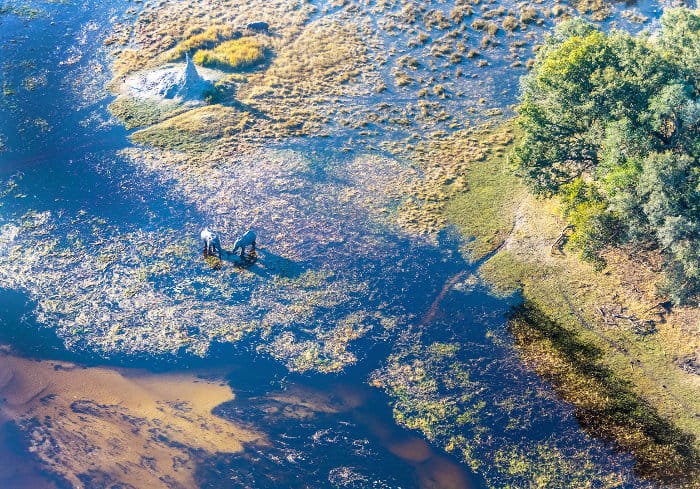
Moremi Game Reserve was formerly the private reserve of Chief Moremi. Chief’s Island is located in the heart of the reserve, although do note that some sections of this island are cordoned off as private concessions.
The Mopane Tongue is where the cheapest camps are situated and is the only option if you don’t book a tour.
Choosing a safari operator
There are dozens of different safari operators to choose from. We do not recommend specific operators. At Africa Freak we just want to give you the information that is necessary to make an informed choice.
You will always get a better deal by booking directly with a Botswana-based safari operator. European or American travel agents do not operate Moremi safaris. They simply sell the tours and outsource your safari to a local operator.
Don’t be afraid to ask lots of questions before you book. Our African safari section contains lots of information about what to ask and how to book a tour.
Getting to Moremi Game Reserve
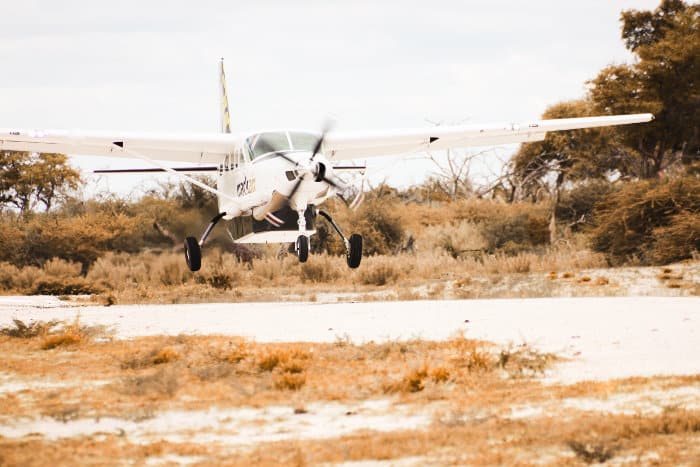
Almost every Moremi safari starts in Maun, Botswana’s gateway destination. You can fly to Maun from Johannesburg and other destinations in Southern Africa.
Upmarket safaris use light aircraft to access the reserve and other parts of the delta. Most people drive into the reserve.
It takes half a day of driving to reach Moremi Game Reserve. And half a day to get back. So on a one-night safari you will spend most of your time driving to and from the reserve.
Planning your time
Remember where the best wildlife can be found? Deep inside the wilderness. It takes half a day to reach Moremi Game Reserve from Maun. Then you will need to travel deeper int the reserve for all the best animal sightings.
The best Moremi safaris are a minimum of four days and three nights. This allows two full days of activities, so you can combine mokoro trips with game drives and possibly walks.
With three nights you will probably have six different activities. Here is how the program can look:
- Day 1 afternoon – mokoro canoe safari (a good change of pace after a morning in the car)
- Day 2 morning – early-morning game drive
- Day 2 afternoon – late-afternoon game drive in another section of the reserve
- Day 3 – full-day motorboat safari, possibly combined with drives and walks on Chief’s Island
- Day 4 morning – early-morning mokoro safari before departure
Taking the next steps

Africa Freak isn’t where you can book a safari. It’s where you can connect with your wild side and discover what’s possible on this amazing continent.
Our advice – just go for it. An African safari in Moremi Game Reserve is one of the world’s ultimate travel experiences.
